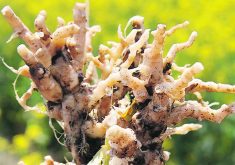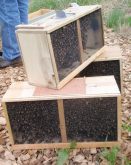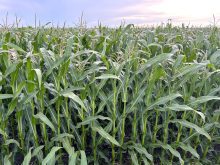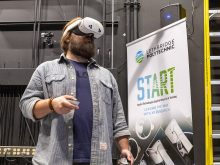Disposing of three million spent hens a year is a major headache for Alberta egg producers, but a protein chemist has an ingenious solution
If Jianping Wu’s technology is commercialized, your wooden chair could be held together by glue made from chickens.
The protein chemist and assistant professor at the University of Alberta has developed a new type of glue by recombining the protein components of poultry carcasses.
“When people think about the egg industry, they often think that the commodity is eggs,” said Wu. “The egg industry is a really complicated industry because you need to feed hens and make them lay eggs, but then you have to think about how to deal with the hens after they lay eggs for a year.”
Read Also

Canola’s clubroot success story
At one time, scientists, agronomists and growers were extremely worried clubroot would spread across the Prairies and devastate Canada’s canola industry.
The productivity of laying hens falls off after about 12 months but getting rid of them is a major headache. In Alberta, 2.4 million laying hens and nearly 600,000 hens from the hatching egg industry are disposed of, composted, or rendered each year.
Since their meat is tough and low quality, it is only suitable for soup or pet food, and because laying hens have so little meat, it’s usually not economically viable to process them. Some are composted on farm, while other producers pay to have them removed.
That’s why the Egg Farmers of Alberta and other industry groups, such as the Canadian Poultry Research Council, support Wu’s research. He’s been on the hunt for a new use for spent laying hens for about four years, including turning them into a glue. Since the Second World War, most adhesives have been made from petroleum byproducts, but were once commonly made from animal protein including milk or blood.
“Historically, people made adhesives without really understanding the science,” said Wu. “We can make a better adhesive using the science and the modern technology available.”
Wu starts by grinding up the whole carcass, and then extracts protein and uses chemical processes to make a water-resistant adhesive similar to wood glues used in construction or furniture making. Wu spent three years creating the glue and has a patent application pending for his technology. Thanks to two years of funding from the Alberta Livestock and Meat Agency, he is now developing a cost-effective method of glue preparation, doing testing on a pilot-scale level, and hoping to commercialize the process.
“If we have this commercial application, we can make the egg industry even more environmentally friendly because we don’t have to dispose of those birds any more,” he said. “We can also make the industry more sustainable by getting extra value from the spent hens. In the future, there may be some real benefits that may even come down to the farmer.”















